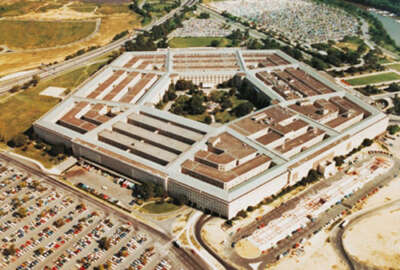
Army reviews all weapons for possible divestiture, seeking to cut sustainment costs
Army says divestiture is the "starting point" for its current modernization strategy as costs to maintain and store old equipment crowd out new procurement.
Seeing little other way to pay for new equipment during a time of declining acquisition budgets, the Army is taking a wide-ranging look at every weapons system in its inventory to decide which ones it can get rid of, hoping that by no longer paying for the sustainment of old platforms it can afford to buy new ones.
Under an initiative directed by Gen. Daniel Allyn, the Army’s vice chief of staff, just about every system is a candidate for potential divestiture, said Lt. Gen Michael Williamson, the top military deputy in the office of the assistant secretary of the Army for acquisition, logistics and technology.
“I have a three-car garage for the first time in my life, and all three of my cars are in the driveway because my garage is full of stuff. It’s the same thing in the Army,” he said Thursday at the annual McAleese defense programs conference in Washington. “We are going to have to make decisions about what we choose to divest, and it’s the starting point for our entire modernization strategy. The vice chief has made it a personal project to go back and look at all the things we’ve accumulated over the last 15 years and make decisions about the things that we’re going to continue to support versus the things that are nice to have but we can’t afford to maintain.”
Depending on which and how many systems the Army chooses to dispose of, there are vast potential savings to be gleaned from a hard look at equipment divestiture. As Defense Secretary Ashton Carter frequently pointed out while he was the department’s acquisition chief, the most expensive aspect of weapons systems isn’t buying them, it’s having them. DoD estimates 60 percent to 70 percent of the lifecycle cost of an average platform is in operations and sustainment, not procurement.
Williamson said the Army is extremely eager to repurpose those O&S dollars for future procurement and research and development, which took a hit in the Army’s 2017 budget proposal. Congress approved $24 billion for Army modernization in 2016, but the service requested only $22.6 billion in 2017 in order to prioritize training and other readiness spending while staying beneath the spending levels in last year’s Bipartisan Budget Agreement.
Officials have not targeted a precise amount of O&S reductions or a number of platforms to eliminate, but every system is on the table during the current review.
“I think you’re going to see decisions fall down along two sides: one side is the systems that we can completely take out of the force, and the second part has to do with whether we’re maintaining too many individual end items within a fleet,” Williamson said. “There are two things happening here: one is the cost to keep a thing running, but the other is just the storage costs. I’m not talking about pre-positioning Army assets in forward locations, just storing them on Army bases in the U.S. costs us a significant amount of money.”
In theory, the current review places every Army platform under the microscope for potential divestiture, but in practice, the specialized capabilities it purchased for the counterinsurgency wars in Iraq and Afghanistan will be the first to go.
“There are a number of items we bought in various quantities that were justified through urgent operational needs or that were produced as quick reaction capabilities, targeted for very specific missions,” he said. “I think you’ll see those at the top of the list of the hard decisions made.”
Copyright © 2025 Federal News Network. All rights reserved. This website is not intended for users located within the European Economic Area.
Jared Serbu is deputy editor of Federal News Network and reports on the Defense Department’s contracting, legislative, workforce and IT issues.
Follow @jserbuWFED





